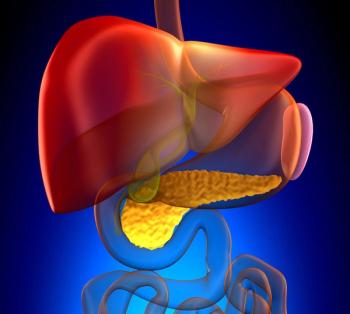
Shorter Diagnosis to Treatment Period Correlates With Worse Survival In MCL
Patients with mantle cell lymphoma who undergo a shorter diagnosis to treatment interval also have worse clinical and disease characteristics on average than those with a longer interval.
Patients with newly diagnosed mantle cell lymphoma (MCL) who underwent a short diagnosis to treatment interval tended to have worse disease characteristics and experienced worse survival outcomes than those who underwent a longer interval, according to findings from a pooled analysis published in Blood Advances.
The median progression-free survival (PFS) was 2.5 years (95% CI, 2.0-3.1) among patients with an interval under 14 days vs 4.8 years (95% CI, 4.2-5.4) among those with an interval between 15 and 60 days (P <.0001). A similar trend was reported among recipients of intensive induction therapy: the median PFS was 3.3 years vs 6.3 years, respectively, among patients with a short vs long interval (P <.001). A short interval correlated with worse PFS in both the univariate (hazard ratio [HR], 1.69; 95% CI, 1.43-2.00; P <.001) and multivariate (HR, 1.50; 95% CI, 1.20-1.87; P <.001) analyses.
The median OS was 7.8 years (95% CI, 6.7-9.1) vs 11.8 years (95% CI, 9.9-14.3) among the short vs long interval groups, respectively (P <.0001). Moreover, in the population of patients who were treated with intensive induction therapy, the median OS was 8.8 years in those with a short interval vs not reached among those with a long interval (P = .008). Both the univariate (HR, 1.66; 95% CI, 1.34-2.06; P <.001) and multivariate (HR, 1.57; 95% CI, 1.20-2.06; P <.001) analyses demonstrated a significant association between shorter intervals and worse OS.
Additionally, among patients with a short interval, 14% had an ECOG performance status of 2 or greater compared with 4% in those with a long interval (P <.01). Elevated lactate dehydrogenase levels were observed in 50% of patients with a shorter interval vs 36% of those with a longer interval (P <.01). Moreover, 44% of those in the short interval group had a high MCL International Prognostic Index (MIPI) compared with 24% of those in the long interval group (P <.001).
“The association of short [disease to treatment interval] with inferior survival in our study is similar to what has been shown in the diffuse large B-cell lymphoma [DLBCL] literature,” the investigators wrote. “In our study, we found that the prognostic impact of disease to treatment interval in newly diagnosed MCL was independent of the MIPI, similar to [how] the prognostic value of [disease to treatment interval is] independent of IPI in DLBCL.”
Investigators derived these findings from a pooled analysis of 3 large datasets: the University of Iowa/Mayo Clinic Specialized Program of Research Excellence Molecular Epidemiology Resource, the phase 2 ALLIANCE/CALGB 50403 trial (NCT00310037), and a multisite cohort of patients with MCL.
A total of 1097 patients were included in the study. Patients with a long interval comprised 73% of this population and had a median diagnosis to treatment interval of 31 days (interquartile range [IQR], 23-42). Those with a short interval comprised 27% of the population, and the corresponding median was 8 days (IQR, 5-12 days).
Across the population, the median age was 63 years (range, 29-96) at diagnosis. Most patients were male (77%) and White (92%). Additionally, the majority of patients had stage IV disease (86%). MIPI was low in 43% of patients, intermediate in 28%, and high in 29%.
The primary end point was OS, and the secondary end point was PFS.
Investigators noted that some of the differences between the two groups were modest. Bone marrow involvement affected 89% vs 81% of patients with short vs long intervals, respectively (P = .005), and B symptoms affected 35% vs 28% (P = .02). Stage IV disease was present in 91% of patients with a short interval and 84% of their long interval counterparts (P = .009). Moreover, 64% vs 53% of patients in each respective group received intensive induction therapy (P = .001).
“[Disease to treatment interval] should be reported in all the patients newly diagnosed with MCL who are enrolling in clinical trials, and steps must be taken to ensure selection bias because of treatment delays in these patients is avoided,” the investigators concluded.
Reference
Epperla N, Switchenko J, Bachanova V, et al. Impact of diagnosis to treatment interval in patients with newly diagnosed mantle cell lymphoma. Blood Adv. 2023;7(11):2287-2296. doi:10.1182/bloodadvances.2022009225
Newsletter
Stay up to date on recent advances in the multidisciplinary approach to cancer.


















































































